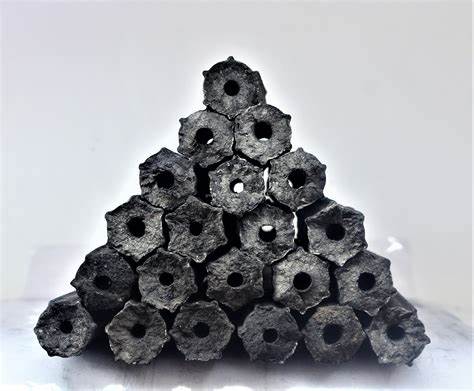Charcoal Harvesting from the Woods Unlockes Sawdust’s Potential for Sustainable Energy
In the heart of our forests lies a hidden treasure – sawdust, a byproduct of timber processing that has long been considered waste. However, recent innovations in sustainable forestry practices have turned the spotlight on sawdust as a valuable resource for charcoal production. This post delves into the journey of charcoal harvesting from the woods, exploring the environmental benefits, technological advancements, and economic opportunities associated with unlocking the untapped potential of sawdust. The sawdust charcoal machine uses pyrolysis technology to recycle sawdust.

The Forestry Landscape and Sawdust Generation
Forestry operations, whether in large-scale commercial logging or small-scale wood processing, generate significant quantities of sawdust as a natural byproduct. Traditionally seen as a disposal challenge, sawdust is composed of fine wood particles created during activities such as sawmilling, woodworking, and timber processing.
Quantifying Sawdust Production
Sawdust production is directly correlated with the scale and intensity of forestry activities. Large sawmills and processing facilities generate substantial volumes of sawdust daily, while smaller operations contribute to the collective output. Understanding and quantifying sawdust production is the first step in unlocking its potential for sustainable charcoal harvesting by wood chips charcoal making machine.
Unlocking the Energy Potential of Sawdust
Charcoal Production Basics
Charcoal is a versatile and energy-dense fuel derived from the carbonization of wood or other organic materials. Traditionally, hardwoods such as oak and hickory were preferred for charcoal production due to their density and high carbon content. However, sawdust has emerged as a viable feedstock for charcoal production, offering a sustainable alternative to traditional wood sources.
Environmental Benefits of Sawdust Charcoal
Harvesting charcoal from sawdust presents numerous environmental advantages. First and foremost, it repurposes a waste product, reducing the need for disposal and minimizing the environmental impact of forestry activities. Additionally, the carbonization of sawdust can be a carbon-neutral or even carbon-negative process when considering the carbon sequestration potential of the trees from which the sawdust originated.

Technological Advancements in Sawdust Charcoal Production
Pyrolysis Technologies
The process of converting sawdust into charcoal involves pyrolysis, a thermochemical decomposition of organic material at elevated temperatures in the absence of oxygen. Advancements in pyrolysis technologies, such as rotary kilns, retort systems, and fluidized bed reactors, have enabled efficient and controlled charcoal production from sawdust.
Energy Recovery Systems
Modern charcoal harvesting facilities incorporate energy recovery systems to maximize efficiency and minimize waste. Heat generated during the pyrolysis process can be harnessed to preheat incoming biomass, reducing the overall energy input required for charcoal production. This not only enhances the sustainability of the process but also contributes to cost-effectiveness.
Emission Control and Environmental Compliance
With a growing emphasis on sustainable practices, charcoal harvesting facilities are adopting technologies to control emissions and ensure compliance with environmental regulations. Advanced filtration and scrubbing systems capture particulate matter and volatile organic compounds, mitigating the impact of charcoal production on air quality.
Economic Opportunities and Community Development
Local Employment and Skill Development
Establishing charcoal harvesting operations in proximity to forestry sites creates opportunities for local employment. Skilled and semi-skilled jobs related to biomass collection, transportation, and charcoal production contribute to the economic development of rural communities associated with forestry activities.
Entrepreneurship and Small-Scale Operations
The relatively low barriers to entry in charcoal production from sawdust make it an attractive option for entrepreneurs and small-scale operators. Community-based initiatives can empower individuals to establish microenterprises, fostering economic resilience and self-sufficiency.
Market Potential and Demand for Sustainable Charcoal
As consumer awareness of environmental issues grows, there is an increasing demand for sustainably sourced products, including charcoal. Charcoal harvested from sawdust aligns with these market trends, offering a renewable and eco-friendly alternative to traditional charcoal produced from clear-cutting forests.
Challenges and Mitigation Strategies
Quality Control and Standardization
Ensuring the consistency and quality of sawdust-derived charcoal presents a challenge, particularly when dealing with diverse feedstocks. Implementing quality control measures and standardized production protocols are essential for meeting market requirements and consumer expectations.
Logistical Challenges in Biomass Collection
Efficient biomass collection is crucial for a successful charcoal harvesting operation. Logistical challenges, including transportation and storage of sawdust, can impact the overall viability of the process. Implementing streamlined collection and transport systems is key to overcoming these challenges. The charcoal briquette making machine makes charcoal into different shapes.
Market Education and Consumer Perception
Educating consumers about the benefits of charcoal harvested from sawdust is essential for market acceptance. Overcoming misconceptions and promoting the environmental and social sustainability of this practice will contribute to building a strong market for sawdust-derived charcoal.
Conclusion
Charcoal harvesting from the woods, specifically from sawdust, represents a paradigm shift in the relationship between forestry activities and sustainable energy production. By unlocking the potential of this abundant and often overlooked byproduct, we not only address waste management challenges but also contribute to the development of a circular economy within the forestry sector. The convergence of technological advancements, economic opportunities, and environmental benefits makes sawdust-to-charcoal initiatives a compelling pathway towards a greener and more sustainable future. As the world seeks alternatives to traditional energy sources, the woods are not only providing timber but also fueling the fire of innovation in sustainable energy practices.